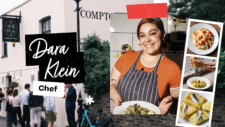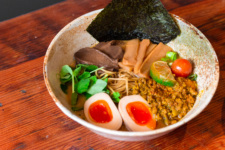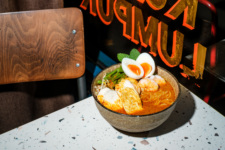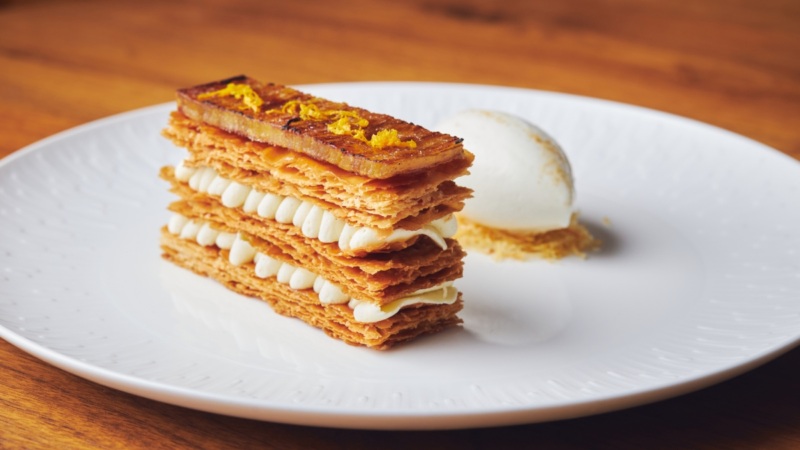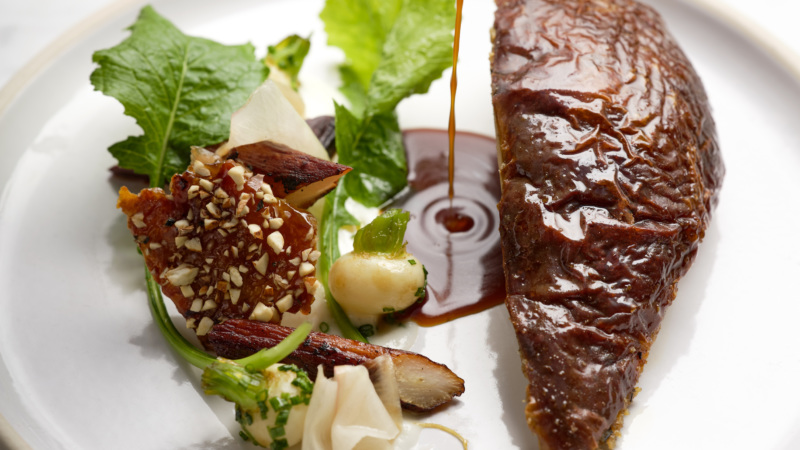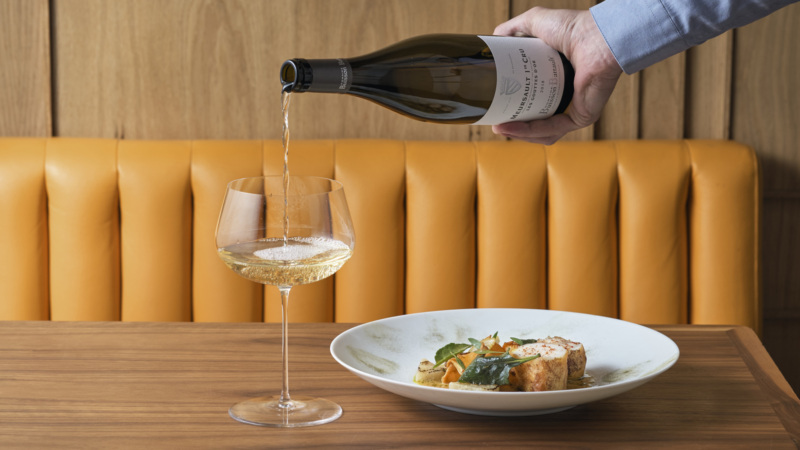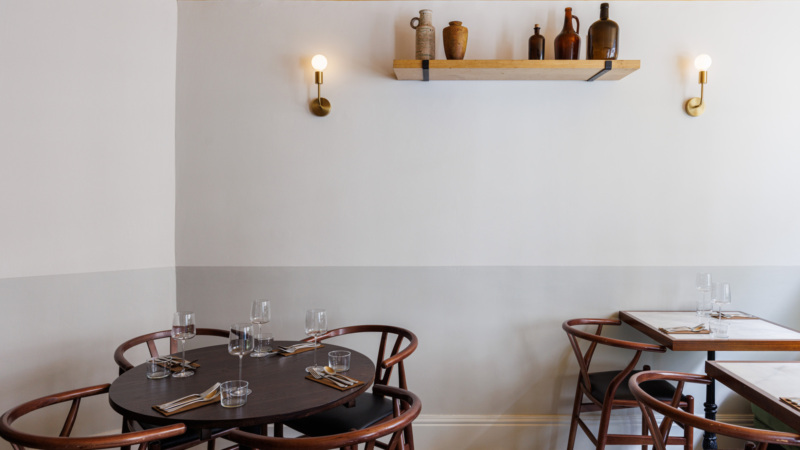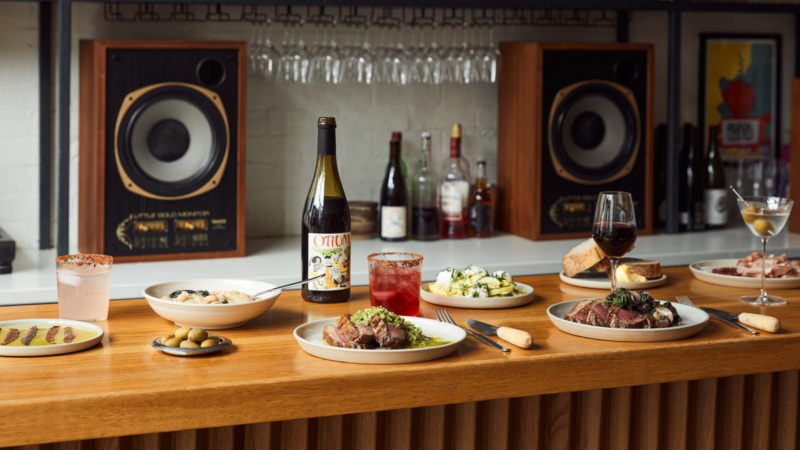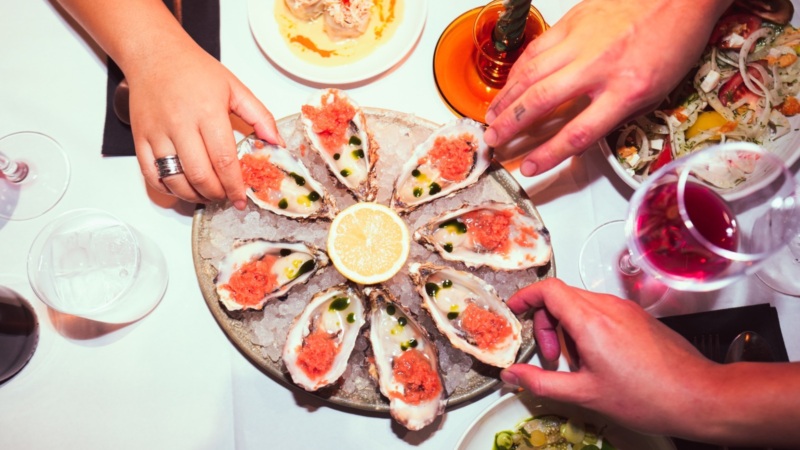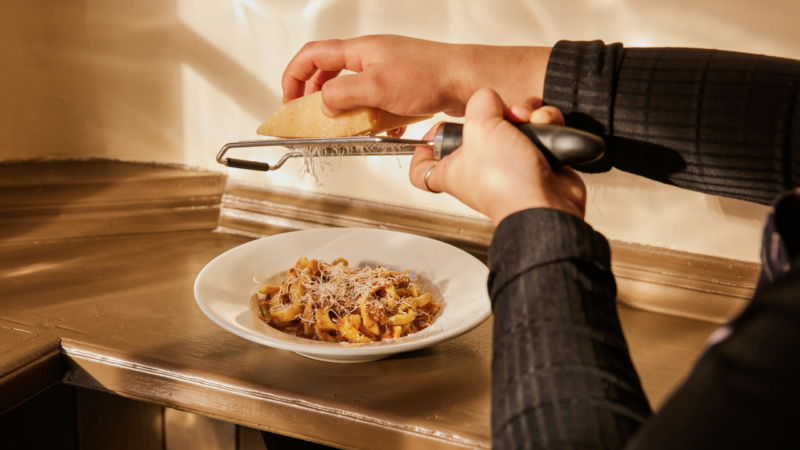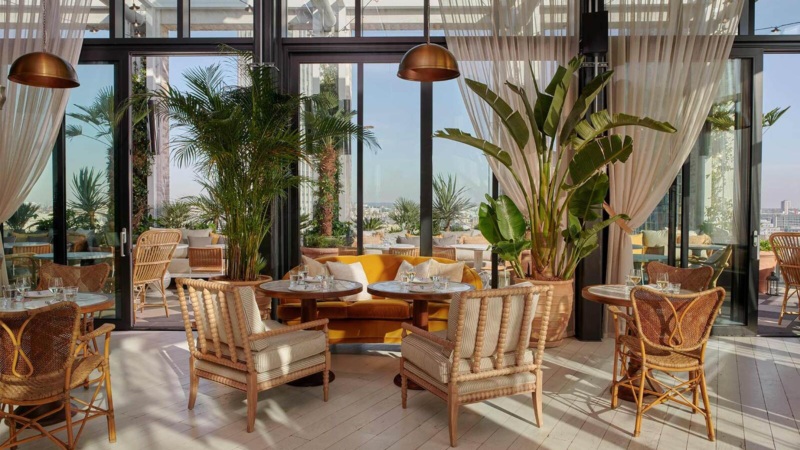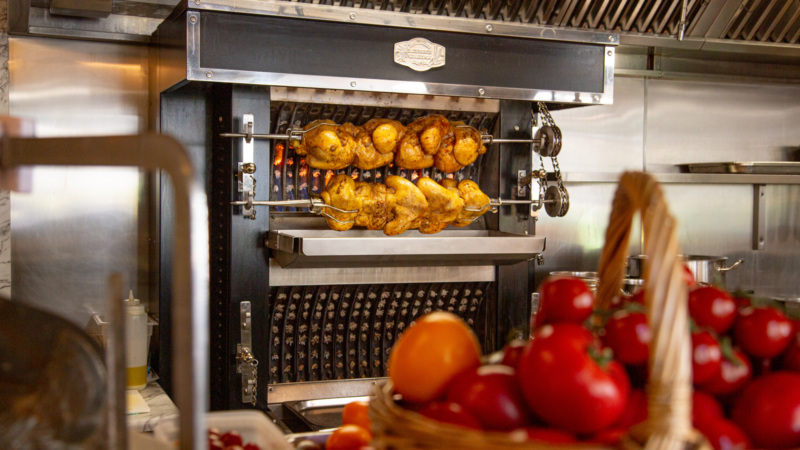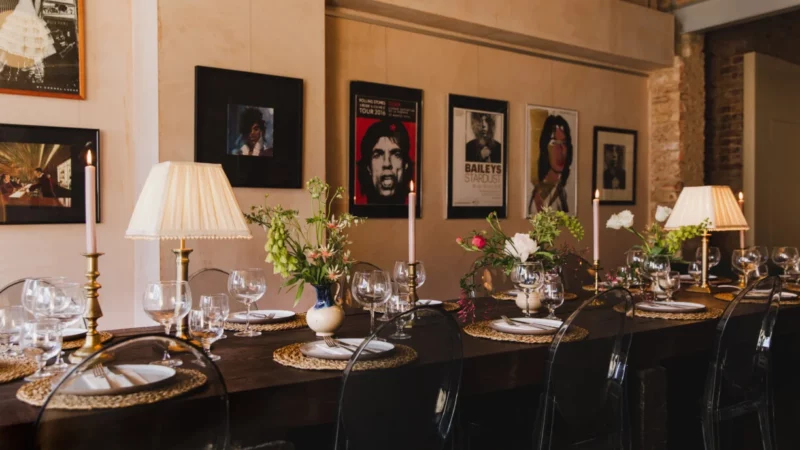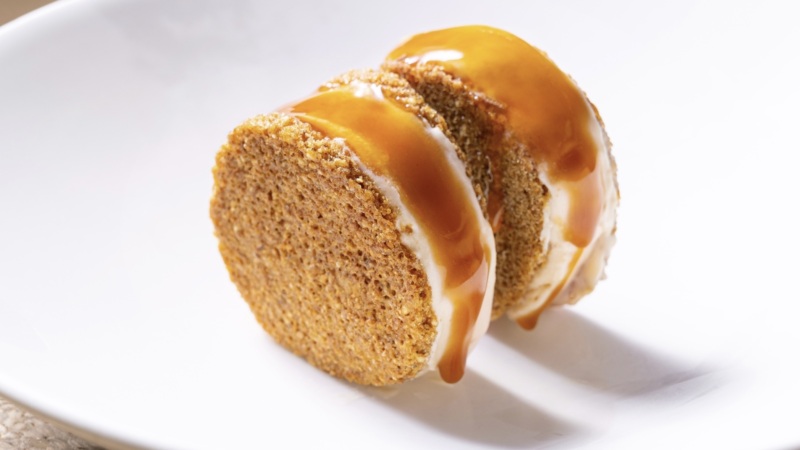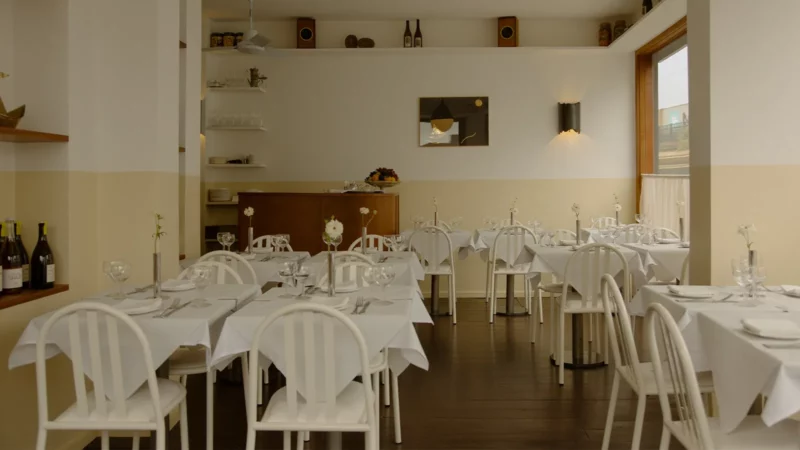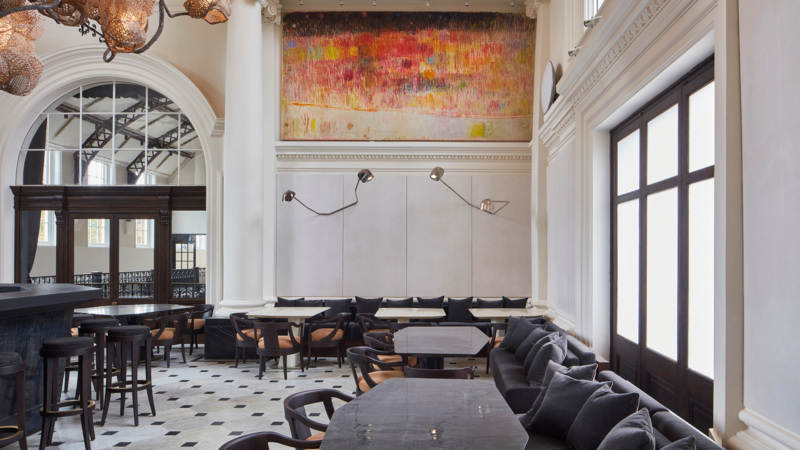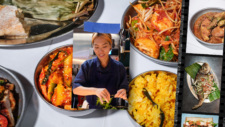

Five Essential Dishes at Mambow, Abby Lee’s Love Letter to Malaysian Cuisine
The heat has been building around Mambow since it moved from Spitalfields to Peckham in 2022. Mambow’s now moved again, this time to Clapton, where chef Abby Lee is cooking some of the most exciting southeast Asian food in London.
Until a couple of years ago, Cordon Bleu-trained Lee had never really cooked Malaysian food before. It was only during lockdown when she went home to Singapore and Malaysia that she had what she herself calls an “epiphany”. “I had been away for so long. After ten years, just eating the food all over again, I really reconnected with my roots and realised that these family recipes, I wanted to bring them back to the UK and not let them die out with me. Returning, my mission was really clear. It’s going to be Malaysian food and all the different sides to it”, she has told Resy previously.
While Lee learned recipes and techniques from her aunty and her grandmother, you won’t actually find a precise simulacrum of their cooking on the menu at Mambow. Lee’s motivation is to preserve the recipes while modernising their form. R&D is an ongoing part of her work, all the more so in Hackney where she has more space to cook (and finally has a longed-for grill). The next round of new dishes drops in time for the Lunar New Year, along with a few old dishes such as the deep-fried yam basket filled with kung pao chicken and cashews, and braised dark soy pork belly with cloud ear mushrooms. Once the team’s settled in and ready to open for weekend lunch service, she’ll also be bringing back her popular Hainanese chicken sando and her exceptional laksa. Here, she tells us about the dishes she wants you to try right now.
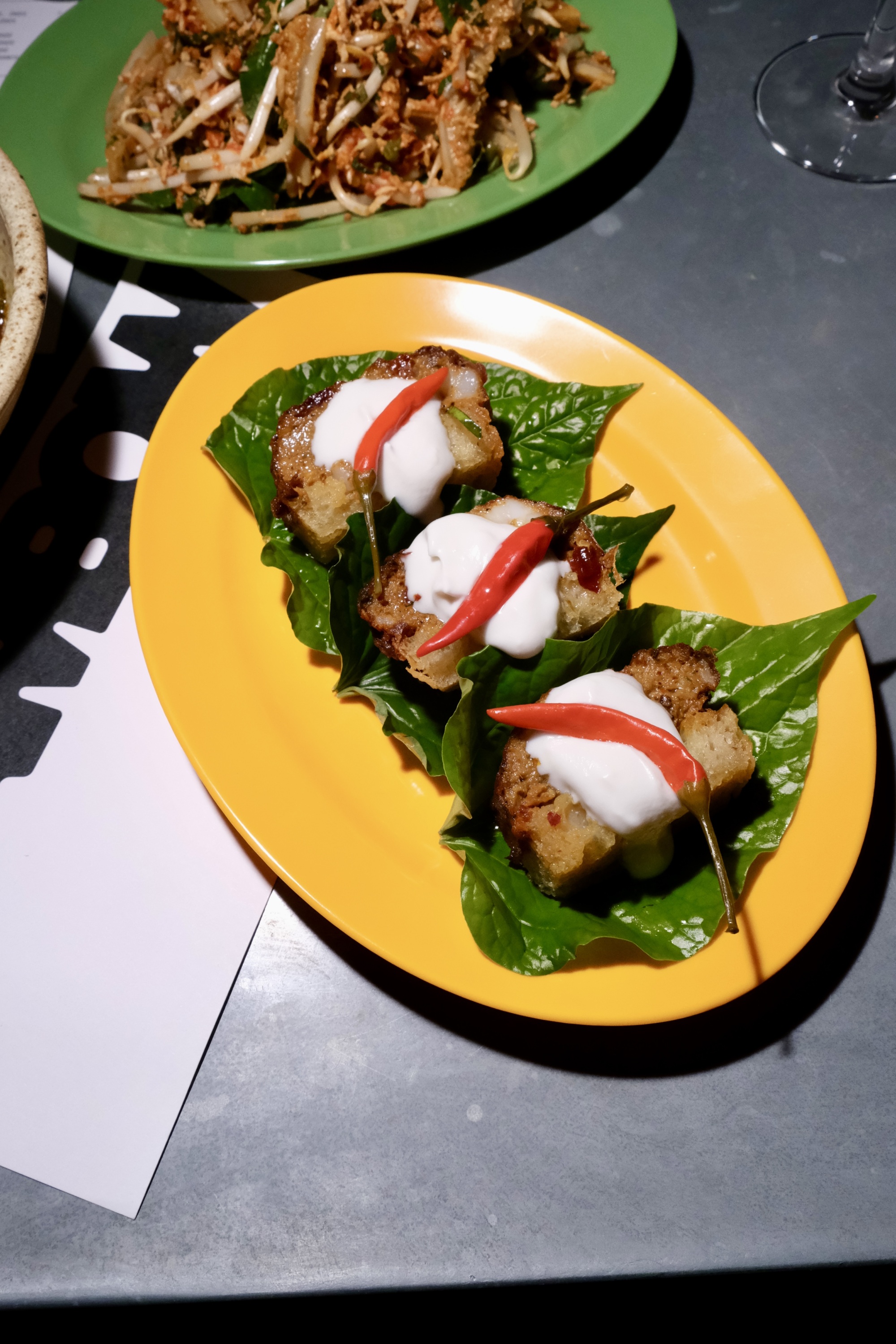
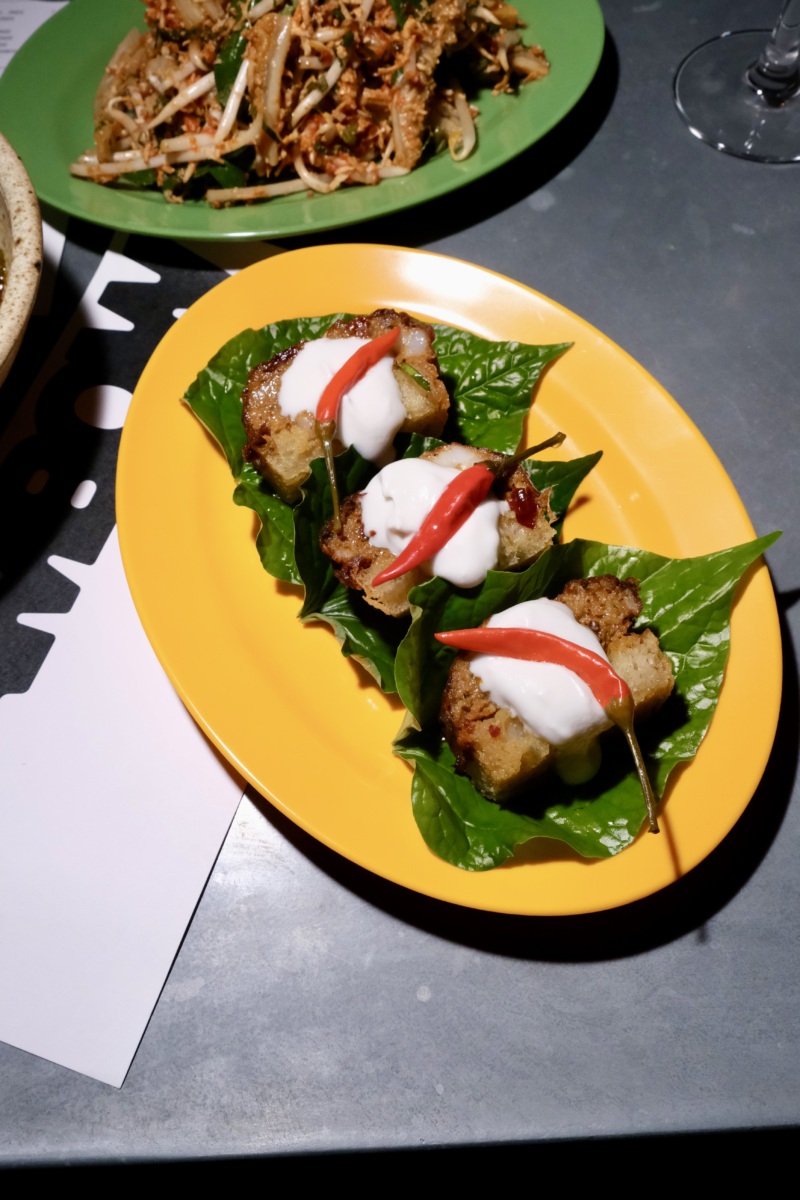
1. Otak-Otak Prawn Toast
“Otak-otak is a Nyonya dish, which is a cuisine I guess we specialise in. It’s definitely not traditionally served this way. Traditionally it’s a red curry and kaffir lime leaf fish custard basically, that’s the best way to describe it, steamed in banana leaves. We’ve done it at the restaurant previously in more traditional forms and we’ve done it in a pâté form on seaweed crackers. We were just trying to think of another way we could serve it and just thought ‘prawn toast!’ – it’s basically everyone’s favourite dish. So we swapped out the fish for prawns and tweaked the recipe so that it holds when deep-fried on some really nice milk bread. It’s usually very soft so you would not be able to deep-fry that. To incorporate the wild betel leaf which is traditionally baked in the custard, we thought eat it whole, fresh, balanced out with some sweet reduced coconut cream. I’d go for my pét-nat with this one, the Garo’vin Somnambulles from Wright’s Wines.
The dish is in its third iteration now. I’m not sure if there’s another version that can be done. Actually, we did think of a burger, in like a prawn patty form. It was really good for staff meals but I’m not sure if it should go beyond us.”
2. Kerabu Perut
Braised Tripe, Beansprouts, Sambal Belacan, Herb Salad
“Another dish that we’ve been quite passionate to push is the kerabu perut which is braised tripe salad. Kerabu is the Malay word for salad. Kerabus are really ingrained in me, being from northern Malaysia. They’re these really spicy herbal salads that balance out the meal so much. The raw herbs and raw vegetables balance out the very strong caramelised flavours and the fried stuff. I was brought up not with tripe ones but more with prawns, or pineapple, cucumber, or mango, but now I’m grown up I want to eat more offal now.
It’s probably not the time of year right now for fruit but it’s a template you can adapt, very much so, according to the weather outside. It’s really fun to adapt them to what you get here. The textures are amazing. The tripe absorbs the seasonings you put onto it so well. It’s an all-round exciting mouthful. It’s quite hot so I’d go for a chilled red; Rennersistas’ Superglitzer from Newcomer Wines is a really good one.”
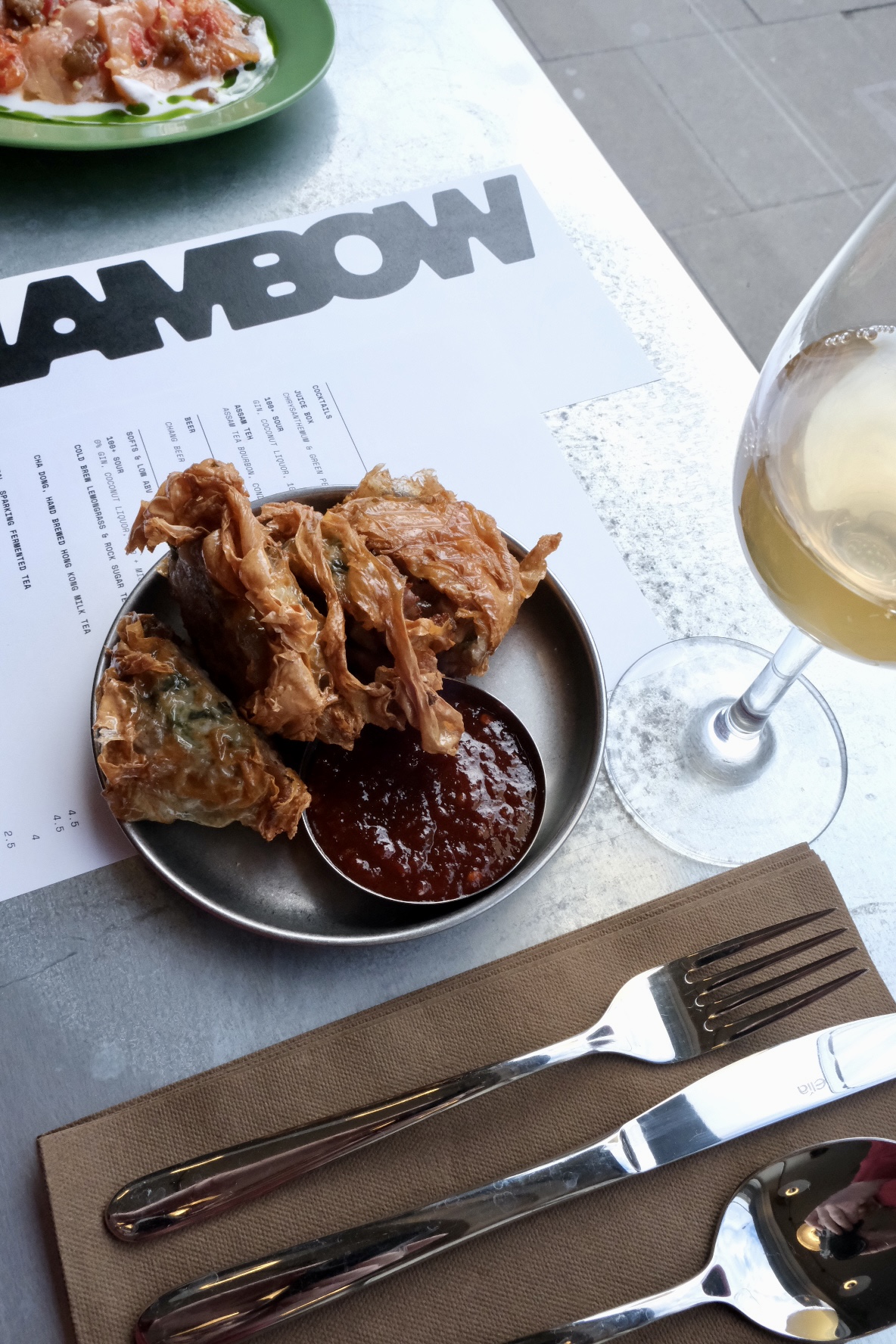

3. Lor Bak
Crispy Five Spice Pork and Prawn Bean Curd Roll
“This is the one that will never leave me. It’s funny what becomes the most ordered dish. Someone said it’s like an English sausage roll so I guess maybe it’s not a surprise [it’s so popular]. It’s a homey dish that you have as a starter to every meal back home. It’s nice that something so regular can be so photographed and talked about. I guess it’s the textures, the outer crunchy bean curd skin, the way it puffs up; it’s a texturally fun dish to eat. There are water chestnuts in there as well for extra freshness, and lots of coriander and five spice. When I’m rolling them, I sort of remember not exactly where I’d would be but ah, that smell, it’s so familiar.
Recipes are passed down within families or you just talk in person; you don’t write it down. It’s about watching, remembering.
This is also another Nyonya dish – the Chinese side, not the Malay side – whereas kerabu is the Malay side. Some of my recipes are passed down from my aunt and my grandma and then adjusted to the ingredients here, just because the red onion is different or the chilli is different. Others I’ve found through reading history books I’ve collected. Whenever I go back home to Malaysia and Singapore, I try to find more books. There are so few recipes that are written down but sometimes you can find them in second-hand books. Recipes are passed down within families or you just talk in person; you don’t write it down. It’s about watching, remembering.”
4. Tangy Pineapple Curry with Crispy Garlic Chive Dumplings
“This is definitely our invention. You won’t find it in Malaysia. You would find the curry sauce itself. That’s very Malay – sour, sweet, spicy – but the garlic chive dumplings on top is quite a Chinese thing, or in Thailand they have these garlic chive cakes or dumplings. It just occurred to me it would be a match made in heaven. The way they absorb the sauce. It’s a very fragrant, moreish dish. It’s also vegan. There are a lot of vegetable dishes in Malaysian cuisine but they often have prawns so you kind of have to find different textures to try and mimic that deep fish flavour or that sort of bouncy prawn texture. I’ll use banana blossoms or these garlic chive dumplings are very bouncy.
The more times I change the menu, the more recipes and dishes we have [in our repertoire]. It’s only a good thing now we have a menu double the size. Everyone’s having fun, enjoying the prep! It’s definitely getting easier and easier to find ingredients. Our Thai suppliers’ and our Chinese suppliers’ list is growing which shows there are just more southeast Asian restaurants in London coming through.”
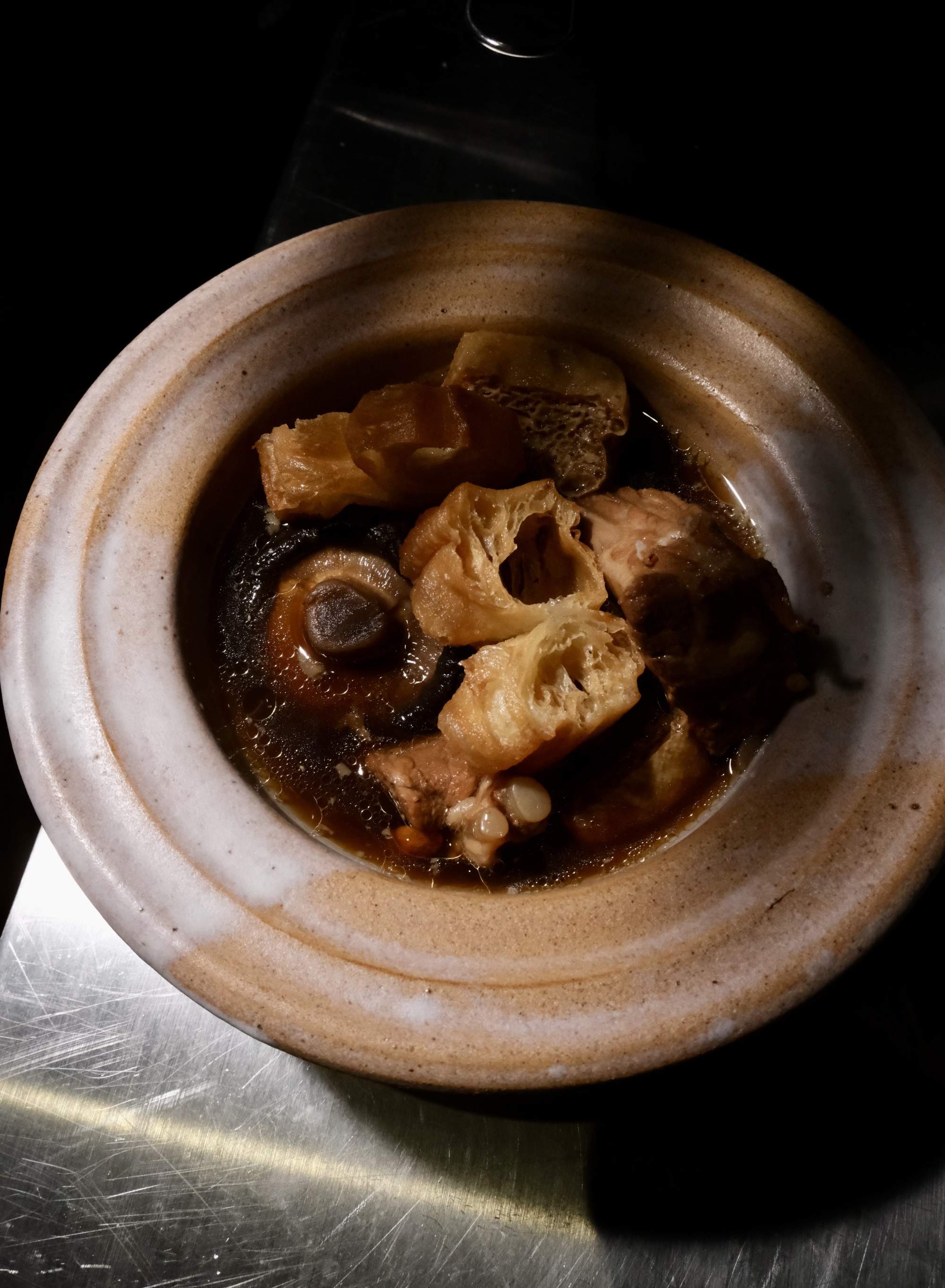

5. Bak Kut Teh
Herbal Pork Rib Soup, Fried Youtiao
“The soup, right now, is all I’m drinking. It’s like this Chinese herbal pork rib soup, served with fried Chinese doughnuts, the long ones. They are so good. It’s so nice to be able to have a soup on the menu now. Before there wasn’t the space for it. It requires a very long boil and it’s always really good to rest it overnight then serve it the next day. It’s traditionally served in clay pots; that would be the dream one day. This is a very restorative dish I would say because of all the Chinese herbs in there, balanced out with peppercorns, and the simmered pork bones. It’s deeply nourishing. It’s something I recommend having between the starters and the mains. It cleanses your palate. That’s something we’re trying to push. It can be hard to maybe convince an English person you have the soup with your meal; that it’s something you have with everything else.”
“This is a very Chinese Hokkien dish. You’ll see soups like this in KL [Kuala Lumpur], more like a herbal version; if you have it in Singapore, it’s more the white pepper notes in the forefront. That’s the main difference between the two countries. I’ve gone for the more herbal side; that’s my preference.”
Hilary Armstrong is a London-based journalist and editor. Follow her on Instagram and Twitter. Follow Resy, too.

